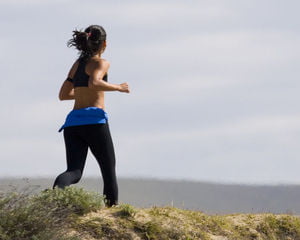Three generations of women – a grandmother, mother and daughter – were among the first people to receive a FDA-approved cellulite treatment when it debuted back in February.
“It’s not the most attractive thing for sure,” the mother, Jennifer, told Dallas television station CW33 News in February. You see people walking around and they’ve got those little dimples in their legs and any woman would want to get rid of that.
The treatment – called Cellulaze – is designed to cut the fibrous fat that make up those dimples.
“It’s like having wrinkled sheets under your bed comforter, okay? Up to this point we’ve been trying to treat the wrinkled sheets by going through the bed comforter and tapping on the bed comforter this is a procedure that is basically getting down the sheets itself and straightening them out,” their doctor, Dr. Powell, said.
The treatment isn’t cheap – it’s $5,000 to $7,000 – but it appears to work, somewhat. However, there’s no treatment that will eliminate it for good. Why? Well, cellulite is a complex issue that has many causes, according to Frederic Delavier, fitness expert and author of the upcoming book Delavier’s Sculpting Anatomy for Women: Core, Butt, and Legs.
“Cellulite is a typically feminine phenomenon where subcutaneous fat accumulates in certain areas, primarily the lower part of the body,” Delavier explains, adding that it affects two out of three women, both thin and large. “It is made up of a mixture of water, waste, and toxins in the skin tissue and fatty tissue in certain cells.”
Delavier adds that there are two types of cellulite: One caused by lack of skin elasticity.
“When you pinch your skin between two fingers, it is puffy and looks like the skin of an orange,” Delavier explains. “It’s rough and sometimes wrinkled, and the skin is dehydrated and a little warm.”
The second kind of cellulite causes skin tissue to be spongy and flabby. The cellulite looks different depending on whether you are standing or lying down. “This kind of cellulite mostly occurs in women over 35 years of age,” says Delavier. It can appear after losing a substantial amount of weight, from losing weight too quickly, and from taking too many diuretic supplements.
So, how do the dimples get there? Four main reasons, according to Delavier.
Women tend to hold on to water during menstruation or times of stress. It’ll go away after a few days without any special treatment, except for those women who follow a strict no sugar, little salt diet.
“Only through an intense localized treatment of the fatty mass will you be able to dislodge this orange-peel texture, which will tend to become more difficult over time,” Delavier explains.
Hormonal changes
According to Delavier, the development and appearance of cellulite is linked to important hormonal stages in women’s lives, like puberty and pregnancy. However, going through menopause doesn’t automatically mean more cellulite.
At this stage of life, even though your body tends to activate fat cells less often, this does not mean you will not accumulate cellulite,” says Delavier.
Stress
Stress can increase the appearance of cellulite, thanks to the associated gynecological, circulatory and digestive problems that can come from prolonged bouts of tension.
The liver plays an essential role in digesting food, and if digestion is not occurring properly, then liver function slows down,” says Delavier. “Fat and sugar will be stored, and your body will retain toxins that will considerably alter your skin tissue.”
Heredity
One of the biggest factors in the development of cellulite is heredity. However, it doesn’t mean cellulite is a given. “By eating a diet without sugar and by working your legs, you can break the hereditary chain,” Delavier says. “With targeted and in-depth regular exercise, you can confine cellulite and stop it from expanding.”
You will want to use long sets and short recovery time to burn fat,” he says, adding that the exercises should be focused on the areas most affected by cellulite.
Flexion movements including forward lunges that will help activate blood circulation and will work the thigh muscles and the knees,” Delavier says. “Running and stair machines are also ideal for working the buttocks and thighs.”
Would you consider surgery to get rid of your cellulite?>




